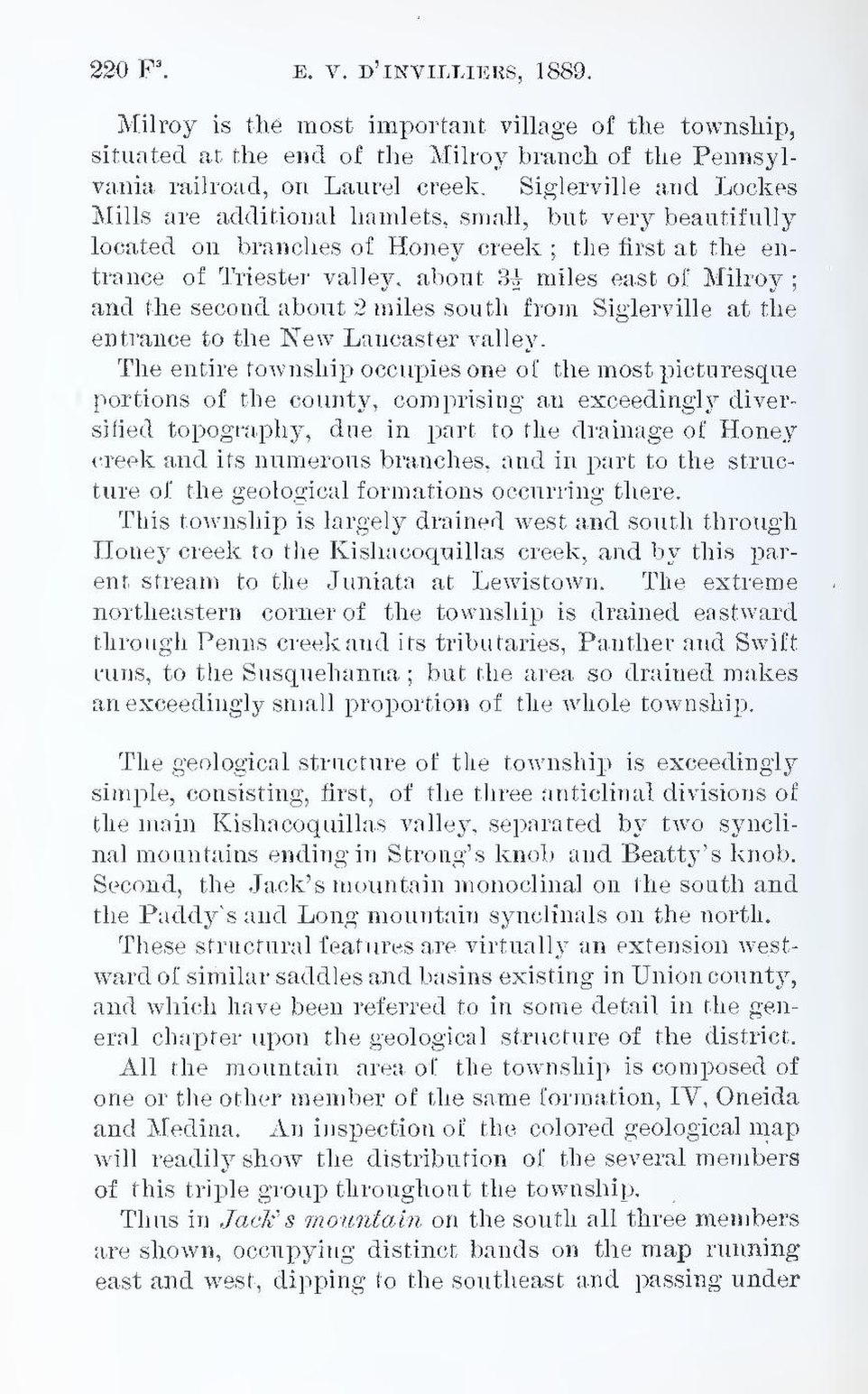Milroy is the most important village of the township, situated at the end of the Milroy branch of the Pennsylvania railroad, on Laurel creek. Siglerville and Lockes Mills are additional hamlets, small, but very beautifully located on branches of Honey creek; the first at the entrance of Triester valley. about 35 miles east of Milroy; and the second about 2 miles south from Siglerville at the entrance to the New Lancaster valley.
The entire township occupies one of the most picturesque portions of the county, comprising an exceedingly diversified topography, due in part to the drainage of Honey creek and its numerous branches, and in part to the structure of the geological formations occurring there.
This township is largely drained west and south through Honey creek to the Kishacoquillas creek, and by this parent stream to the Juniata at Lewistown. The extreme northeastern corner of the township is drained eastward through Penns creek and its tributaries, Panther and Swift runs, to the Susquehanna; but the area so drained makes an exceedingly small proportion of the whole township.
The geological structure of the township is exceedingly simple, consisting, first, of the three anticlinal divisions of the main Kishacoquillas valley, separated by two synclinal mountains ending in Strong’s knob and Beatty's knob. Second, the Jack’s mountain monoclinal on the south and the Paddy’s and Long mountain synclinals on the north.
These structural features are virtually an extension westward of similar saddles and basins existing in Union county, and which have been referred to in some detail in the general chapter upon the geological structure of the district.
All the mountain area of the township is composed of one or the other member of the same formation, IV, Oneida and Medina. An inspection of the colored geological map will readily show the distribution of the several members of this triple group throughout the township.
Thus in Jack’s mountain on the south all three members are shown, occupying distinct bands on the map running east and west, dipping to the southeast and passing under
